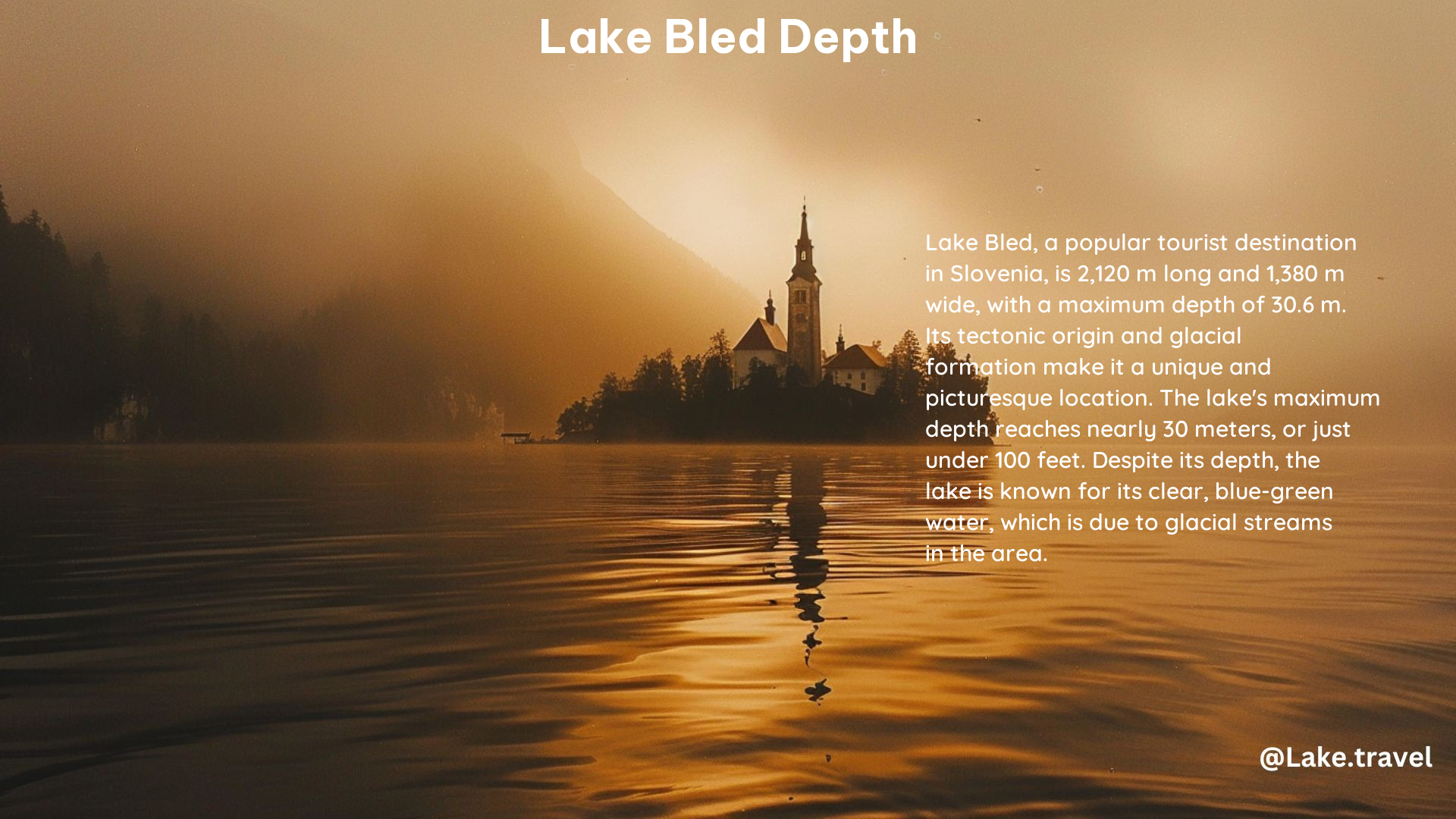Lake Bled, nestled in the heart of the Julian Alps in Slovenia, is a breathtaking natural wonder that has captivated visitors from around the world. One of the most intriguing aspects of this picturesque lake is its remarkable depth, which reaches an impressive 29.5 meters (97 feet).
The Depth of Lake Bled: A Closer Look
The maximum depth of Lake Bled is a staggering 29.5 meters (97 feet), making it a truly remarkable natural feature. This depth is the result of a complex geological history, with the lake being formed by a combination of glacial and tectonic processes.
Factors Influencing the Depth of Lake Bled
The depth of Lake Bled is influenced by several key factors:
-
Glacial Formation: The lake was formed during the last ice age, when glaciers carved out the landscape, creating a deep basin that would eventually become Lake Bled.
-
Tectonic Activity: The lake’s depth is also influenced by tectonic forces, which have shaped the surrounding mountains and valleys over millions of years.
-
Lack of Large Tributaries: Unlike many other lakes, Lake Bled has no large natural tributaries, which means that the water level is primarily maintained by springs and precipitation, rather than being influenced by significant inflows.
Exploring the Depths of Lake Bled
The depth of Lake Bled offers a unique opportunity for visitors to explore the underwater world of this captivating lake. Scuba diving and snorkeling are popular activities, allowing adventurous travelers to glimpse the diverse aquatic life that thrives in the lake’s depths.
The Aquatic Life of Lake Bled

Lake Bled is home to a rich and diverse array of aquatic life, with numerous species of fish and other organisms found in its waters.
Fish Species in Lake Bled
The lake is a popular destination for anglers, with a variety of fish species available for catch-and-release fishing. Some of the most common fish species found in Lake Bled include:
| Fish Species | Description |
|---|---|
| Catfish | Large, bottom-dwelling fish with distinctive whisker-like barbels |
| Pike | Predatory fish known for their elongated, streamlined bodies and sharp teeth |
| Pike-perch | A species of freshwater fish with a distinctive spiny dorsal fin |
| Carp | Large, hardy fish with a distinctive sucker-like mouth |
| Lake Trout | A species of trout that thrives in the cool, deep waters of the lake |
| Chub | A small, silvery-colored fish found in many European freshwater bodies |
| Tench | A species of freshwater fish known for its olive-green coloration |
| Roach | A small, silvery-white fish common in many European lakes and rivers |
| Common Rudd | A species of freshwater fish with a distinctive golden-red coloration |
| Perch | A popular game fish with a distinctive spiny dorsal fin |
Aquatic Flora and Fauna
In addition to the diverse fish species, Lake Bled is home to a variety of aquatic plants and other organisms. The lake’s clear waters and nutrient-rich environment support a thriving ecosystem, including:
- Submerged aquatic vegetation, such as pondweeds and water lilies
- Invertebrates, including snails, clams, and various insect larvae
- Amphibians, such as frogs and newts, which can be found along the lake’s shores
Recreational Activities at Lake Bled
The depth and unique characteristics of Lake Bled make it a popular destination for a wide range of recreational activities.
Fishing
As mentioned earlier, Lake Bled is a renowned fishing destination, attracting anglers from around the world. The lake’s depth and diverse fish population offer excellent opportunities for catch-and-release fishing, with a variety of techniques and equipment used to target the different species.
Boating and Water Sports
The lake’s calm waters and scenic surroundings make it an ideal location for a variety of water-based activities, including:
- Rowing and paddling in traditional wooden boats called “pletna”
- Kayaking and canoeing
- Motorized boating
- Swimming and other water sports
Hiking and Sightseeing
The area surrounding Lake Bled offers numerous hiking trails and scenic viewpoints, allowing visitors to explore the stunning natural beauty of the region. Some of the most popular destinations include:
- Bled Castle, a medieval fortress perched atop a cliff overlooking the lake
- Bled Island, home to the picturesque Church of the Assumption
- The Vintgar Gorge, a scenic canyon with a wooden walkway and waterfalls
Conclusion
Lake Bled’s remarkable depth of 29.5 meters (97 feet) is a testament to the lake’s fascinating geological history and the natural wonders that continue to captivate visitors from around the world. Whether you’re an avid angler, a water sports enthusiast, or simply a lover of scenic landscapes, Lake Bled offers a truly unique and unforgettable experience.
